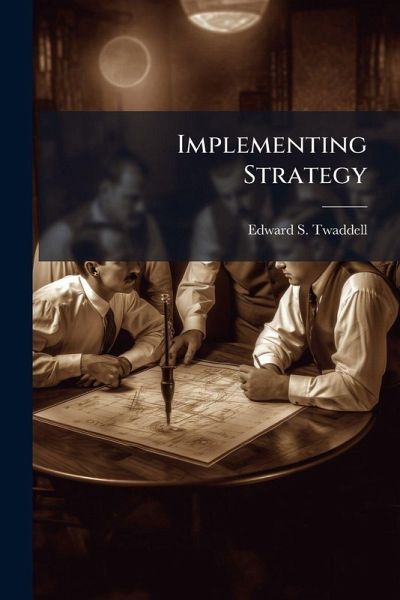
Implementing Strategy

PAYBACK Punkte
8 °P sammeln!
This study addresses how operational and strategic commanders best implement strategies to accomplish their specific goals by analyzing the three distinct tasks that strategic commanders must accomplish in order to successfully build the support they require: 1) develop and communicate a vision of the future state of affairs with regard to the strategic situation to subordinates, peers, and superiors; 2) generate the requisite political power to bridge the gaps between themselves and other peer actors in order to 3) influence superiors to support the strategy. Using the cases of Generals Dwigh...
This study addresses how operational and strategic commanders best implement strategies to accomplish their specific goals by analyzing the three distinct tasks that strategic commanders must accomplish in order to successfully build the support they require: 1) develop and communicate a vision of the future state of affairs with regard to the strategic situation to subordinates, peers, and superiors; 2) generate the requisite political power to bridge the gaps between themselves and other peer actors in order to 3) influence superiors to support the strategy. Using the cases of Generals Dwight D. Eisenhower and David H. Petraeus, this study demonstrates that support for a strategy can be built using a number of different methods. It finds that different methods are suitable in different situations, but that whatever method is used, the best course is to gain broad-based support for a strategy by gaining the support of subordinates, peers, and superiors. This work has been selected by scholars as being culturally important, and is part of the knowledge base of civilization as we know it. This work was reproduced from the original artifact, and remains as true to the original work as possible. Therefore, you will see the original copyright references, library stamps (as most of these works have been housed in our most important libraries around the world), and other notations in the work. This work is in the public domain in the United States of America, and possibly other nations. Within the United States, you may freely copy and distribute this work, as no entity (individual or corporate) has a copyright on the body of the work. As a reproduction of a historical artifact, this work may contain missing or blurred pages, poor pictures, errant marks, etc. Scholars believe, and we concur, that this work is important enough to be preserved, reproduced, and made generally available to the public. We appreciate your support of the preservation process, and thank you for being an important part of keeping this knowledge alive and relevant.












